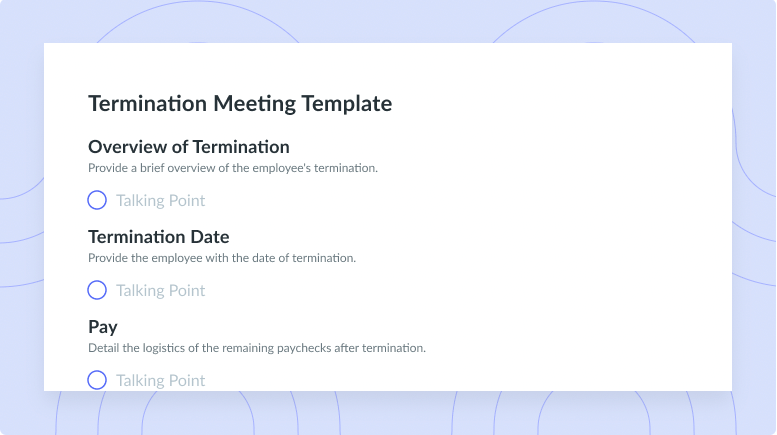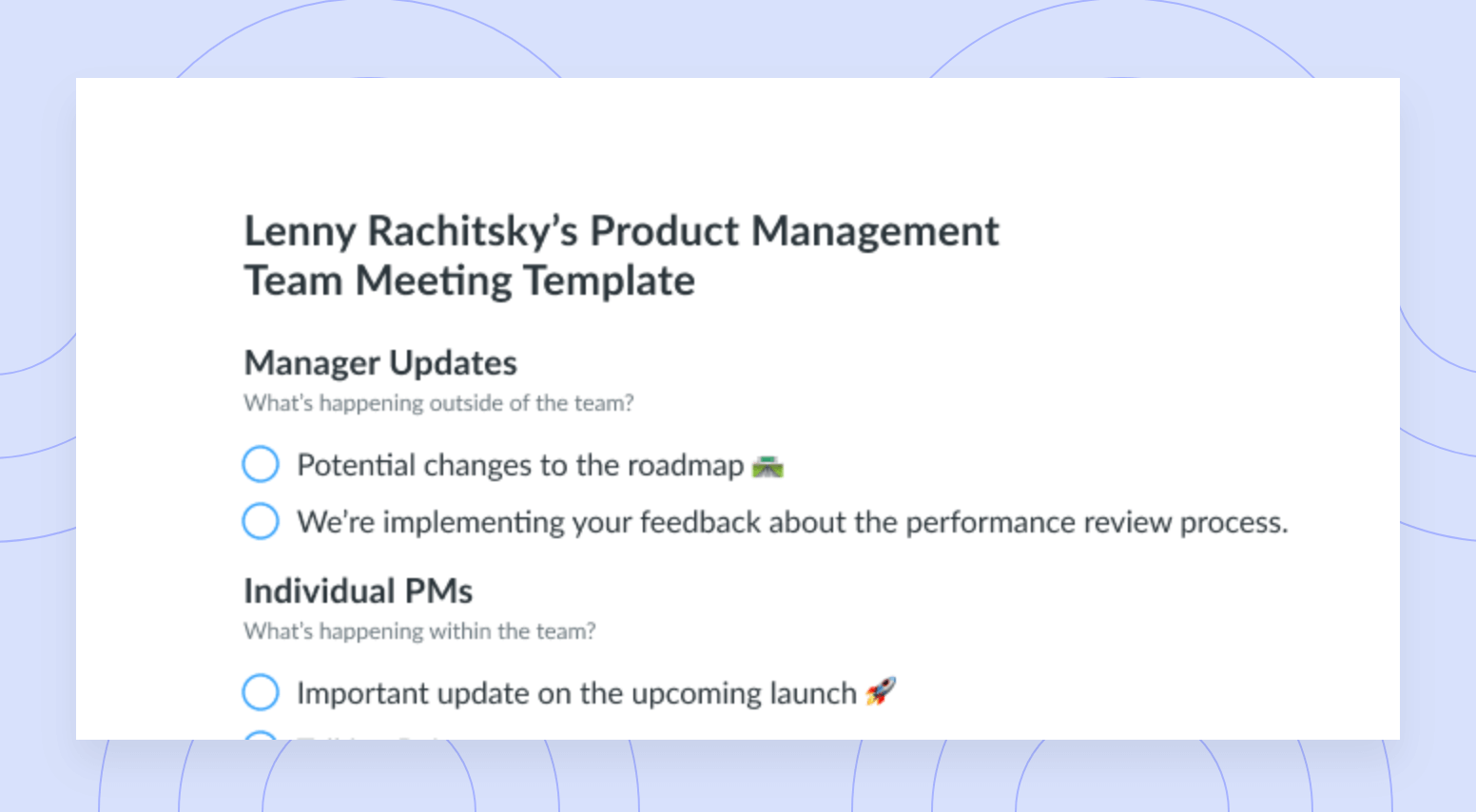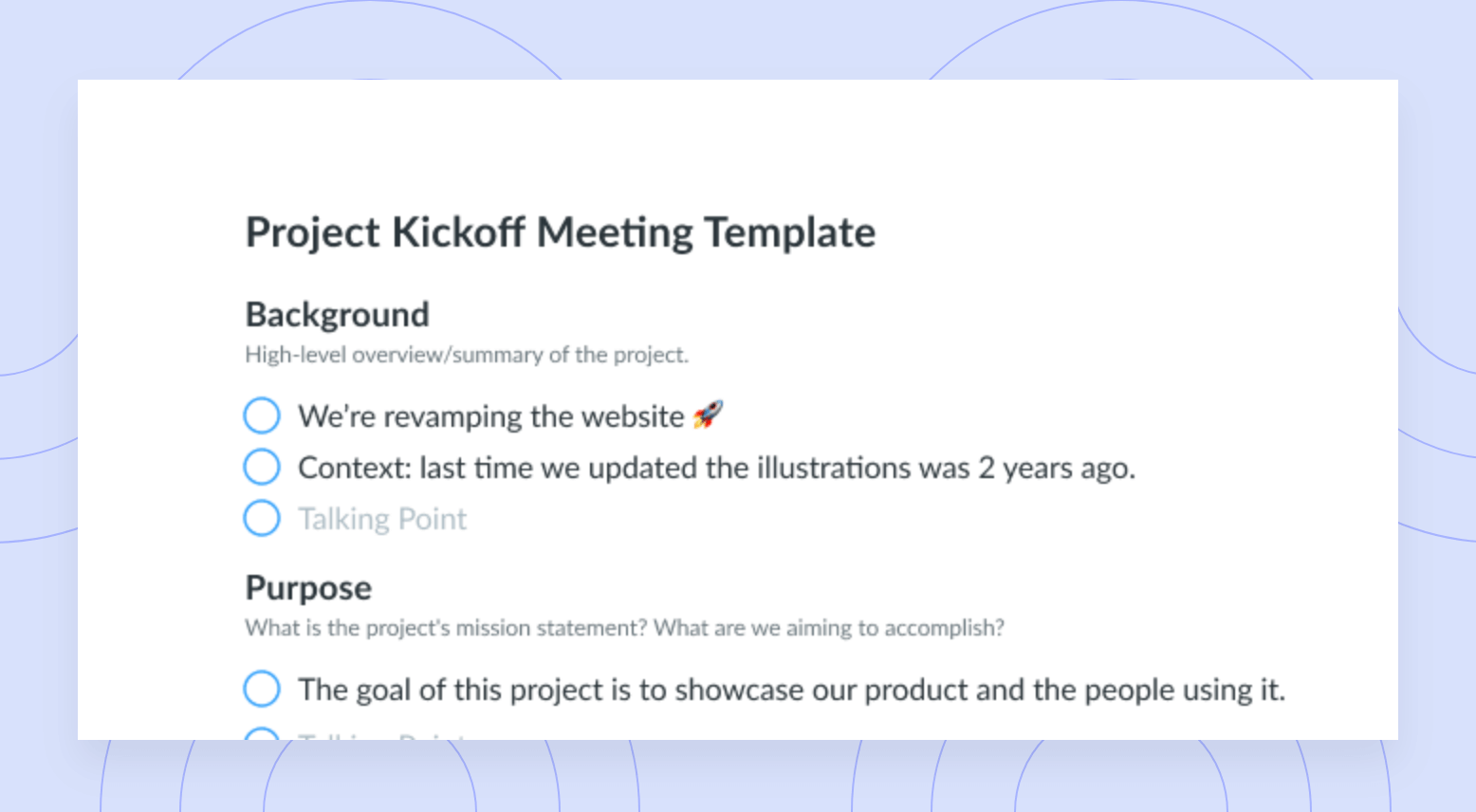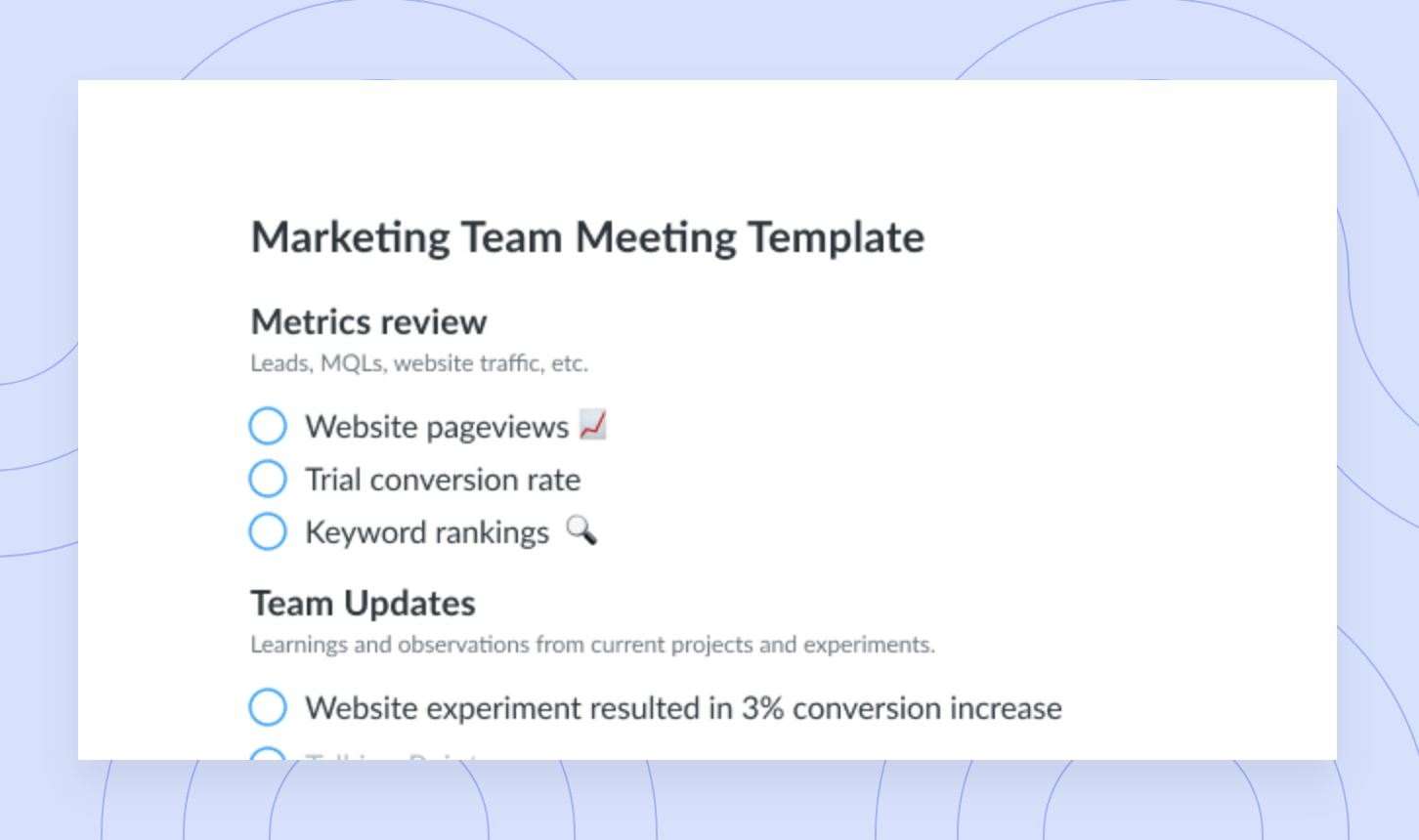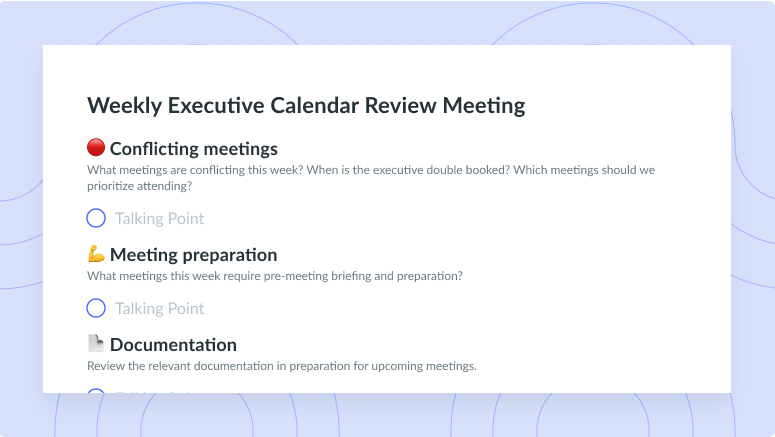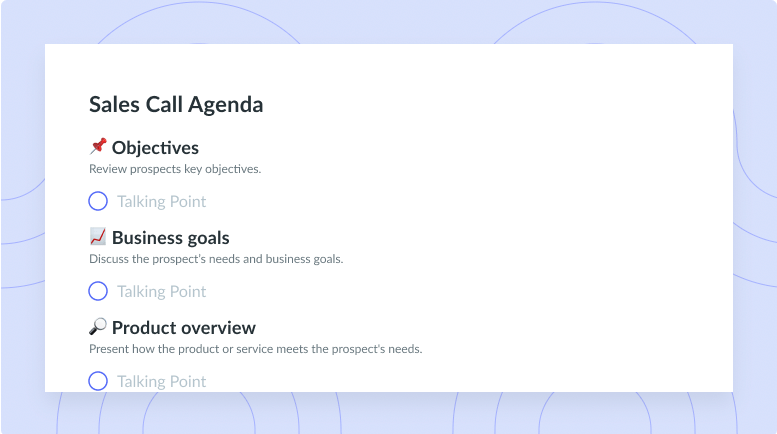Skip Level Meetings: The Ultimate Guide for Leaders
If you want to ensure your skip-level meeting is productive and sets a positive tone, follow this guide for a successful meeting!
It’s not uncommon for upper management to feel out of touch with non-managerial employees.
When this happens, it can be hard to know what’s really going on within your organization. While you may check in with your direct reports, are mid-level managers, some details or communication points could fall through the cracks once they meet with their direct reports.
In order to better manage the flow of communication with your employees while also decreasing how often you feel out of touch with certain colleagues, it’s in your best interest to start scheduling skip-meetings with various members of your team.
- What are skip-level meetings?
- How to hold a skip-level meeting
- The benefits of skip-level meetings
- Final tips for skip-level meetings
What are skip-level meetings?
To best describe what a skip-level meeting is, let’s start off with an example.
Let’s say you’re the Director of Marketing who has weekly meetings with your department leaders or mid-level managers. Your department leaders also have weekly 1-on-1 meetings with their direct reports, the content marketers. A skip-level meeting is where you hold a meeting every few months with the content marketers who are the direct reports of your department leaders… without the department leaders there.
Having a skip-level meeting allows you to get to know these colleagues (the content marketers) better, but it also promotes transparency within the department, builds relationships with new team members, and breaks up the usual flow of conversations or information. For instance, if a content marketer has a high-level question, instead of going to their manager, who then has to then go to you, the Direct of Marketing for the answer, they can instead come to you directly during this meeting and save some back-and-forth. They’ll get their answers faster, too.
Skip-level meetings can be held in a group setting or on a one-on-one basis. Both scenarios can result in employees opening up to higher-level positions and build better relationships. It’s just about how the meeting and message are delivered!
How to hold a skip-level meeting
There’s definitely a right way and a wrong way to go about conducting skip-level meetings. If you want to ensure your skip-level meeting is productive and sets a positive tone, follow these tips.
1 Prepare in advance
A great skip-level meeting takes some preparation. If we’re going back to the example scenario above, the first thing you want to know is to let your department leaders know that you’ll be holding monthly meetings with their direct reports and what your intention is for the meeting. For this, have a skip-level meeting agenda ready with what you’ll want to get accomplished. Don’t forget to clarify if this will be a group setting or individual basis.
Once you have an agenda and a purpose in place, share this with the colleagues you’ll be working with (the content marketers!). This ensures they’re not caught off-guard or feel like their director is spying on them. Additionally, nothing causes stress or anxiety in the hearts of your team, like an unexpected meeting with your director or senior leader appearing out of nowhere on your calendar!
In addition to the agenda, plan ahead with a list of questions for the team. You’ll want to avoid asking them something like, “so, what do you think of your manager?” This sets the opposite tone you’ll want. Instead, go for skip-level meeting questions like:
- What do you think of the company’s plan for the upcoming year?
- Are there things you’d change to improve company culture?
- Do you have all of the resources you need to do your daily responsibilities?
- How do you feel about the software within our tech stack?
- What projects have you enjoyed working on most?
- How would you change our department for the better if you were in my shoes?
- How would you like your role to change in the next five years?
- What is a goal you’re excited about for the upcoming quarter?
If this is your very first skip-level meeting, you can break the ice with some semi-personal questions:
- What’s your favorite career podcast?
- What was the last book you read (and actually enjoyed)?
- Would you recommend working here to your friends?
- What’s your favorite catered-in snack in the kitchen?
- How do you plan on spending the upcoming holiday?
- What do you love about working remotely?
- What was the last concert you’ve been to?
While it’s okay to have a meeting agenda regarding what to discuss, be on the lookout for those with an agenda, too. And I’m not talking about their own plan – I’m talking about a motive. Avoid this by stressing as often and as effectively as possible that the skip-level meeting is not the time to speak negatively about their team lead. But instead, find ways to communicate effectively and discuss the direction of the company.
If you are holding one-on-one skip-level meetings and want to make sure you connect with the employees, try our template that offers example questions that you should be asking!
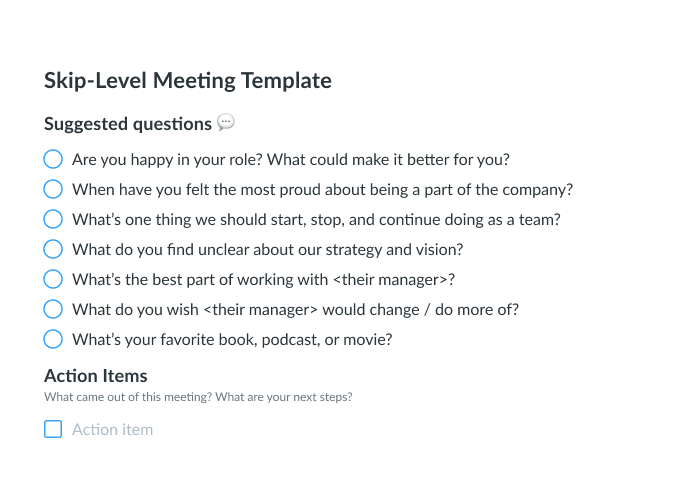
2 What happens during the meeting
It’s the day of the skip-level meeting. Make sure it starts off on the right foot by ordering the team or individual some breakfast or lunch, depending on the time it takes place. This creates a good impression right from the beginning and helps you to build trust.
Before the conversation starts to flow, encourage everyone attending to ask questions. This meeting is as much for them as it is for you. If it’s the first skip-level meeting with this team, it’s normal for them to be cautious or uncertain of the point. Make sure they know everyone is there to learn from one another.
As the meeting leader, and potentially the department leader, make it a point to listen to everything the team has to say, take notes on any relatable feedback, and be sure not to brush off or dismiss any of their concerns.
When the meeting is coming to a close, thank everyone for their time and participation, and show respect by ending on time.

Pro tip
Use a meeting management tool like Fellow to create a collaborative agenda, take notes, and document any feedback given during the skip-level meeting.
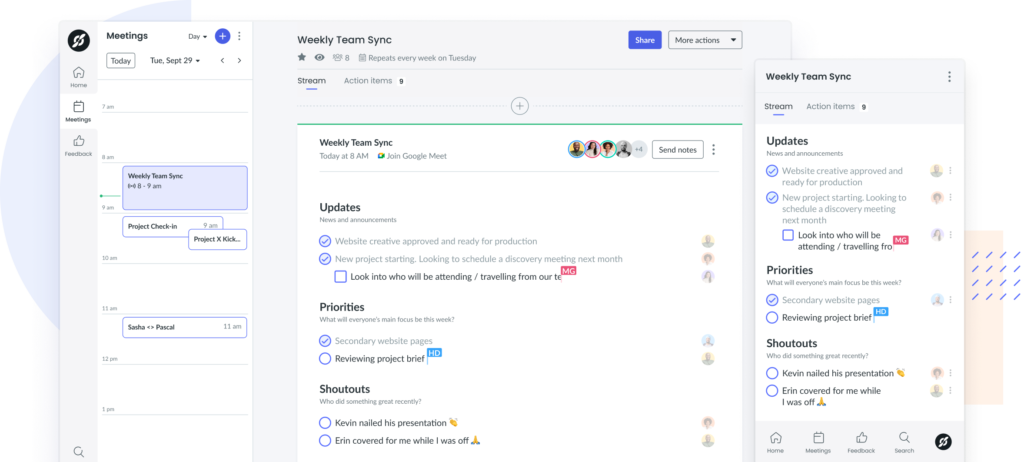
3 How to follow-up
Before too much time passes after the end of the meeting, send the attendees a follow-up email recapping some of the main discussion points. If there are any action items needed on your end, specify how you’ll be getting answers to any unresolved questions you couldn’t answer in the meeting.
Or, if certain areas of improvement were brought to your attention, specify how you will relay this feedback to your manager or a c-suite level executive. Essentially, you want to thank your team for being open and honest with you by repaying the favor with how you follow up. If you skip this step or run through the follow-up too fast, employees will be less likely to join in the future.
The benefits of skip-level meetings
When it comes to holding skip-level meetings with your team, you’ll find that there are many benefits to be had when they’re done correctly.
- Improve the flow of communication: Communication at work can feel like a game of telephone, or “he said-she said”. Skip-level meetings cut out the middleman and make it possible for employees to go right to the source with their questions, concerns, and general feedback. They also ensure that all of your team has access to the same information and that nothing falls through the cracks or gets misconstrued.
- Build better relationships across the organization: Skip-level meetings make it possible for senior-level leaders, directors, and c-suite executives to build a foundation of trust with varying types of people at an organization. At the end, employees feel like they’re being heard and that they have more of a connection with the leadership side of the business.
- Increase employee engagement: Skip-level meetings can also increase employee engagement by making sure that everyone has a voice, getting all team members on the same page with accurate information, and allowing for transparency and honesty throughout the conversation.
- Boost innovation by creating an open environment for sharing ideas: Skip-level meetings should feel like a safe space for employees to share ideas. When this is the case, the team is more likely to work together to innovate and work as one.
Final tips for skip-level meetings
Before you round up your colleagues for a skip-level meeting, don’t forget to apply these final tips to ensure it goes according to plan.
For starters, don’t expect your employees to open up to you right away – especially if this is the first skip-level meeting you’re holding. It will take some time to build trust with this side of the business, as these employees may not be used to working with you directly, or even if it’s the first time they’ve been in a meeting setting with you. There will be some awkwardness at first – and that’s okay!
Secondly, make it a point to keep your employee’s supervisor or manager looped into the plan. You don’t want it to seem like you’re going over their head by meeting with their direct reports. You’ll also want to specify the purpose isn’t for you to ask how they feel about their manager.
Additionally, communicate to both your employees and their supervisor that the goal of a skip-level meeting is not to spy on the supervisor. So, if there is a problem there, a skip-level meeting isn’t the time to bring it up. Hammer home the point of getting together to meet and why it’s important to do so.
Don’t skip the skip levels!
You may feel that a skip-level meeting is just another meeting to add to the calendar, but they’re an integral part of any business’s success! Just make sure you communicate the goal and purpose of what you’re looking to accomplish. Once you do, everyone will be on board.





![How Many Direct Reports Should a Manager Have? [+ Free Template]](https://fellow.app/wp-content/uploads/2022/06/How-Many-Direct-Reports-Should-a-Manager-Have-2.jpg)



